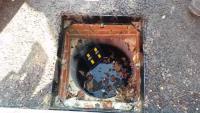 Add My Company
Add My Company
Sign In

Snodland Railway Station now on the Southeastern rail network in Kent, UK operated a full service from June 1856 and continued until it stopped selling train tickets in 1986. The station building has since been used as a takeaway outlet and taxi office the nearby signal box is now a listed building.
In 2007 a PERTIS (Permit to Travel) ticket machine was installed at the station, just outside the entrance to the northbound platform. More recently, Southeastern undertook a £1.1 million refurbishment of Snodland station, which is also a listed building, to create a
'transport interchange' and extended car park which will see the ticket office reopen for the first time since 1986. Since the introduction of high speed services from Maidstone to London via Snodland five years ago, passenger numbers have increased by around 30%.
Accessibility
Outside the station Southeastern is creating better access for buses, cyclists and pedestrians and extending the car park. CCTV system and security lighting will also improve passenger safety.
Information screens giving real-time details on train services, seating, step-free access to the ticket office and a toilet will also improve the passenger experience. David Statham, Managing Director at Southeastern, said: “Since the introduction of high speed services
the number of passengers using Snodland station has grown significantly. We wanted to give them a better station, with better access and facilities, to make their journeys easier.”
Work was completed by August 2016 having been jointly funded by the Department for Transport (DfT) with £600,000 from its National Station Improvement Programme (NSIP), Kent County Council with £485,000 from its Local Sustainable Transport Fund (LSTF) and the Railway Heritage Trust (£32,000). Other partners include Tonbridge and Malling
Borough Council, Kent Community Rail Partnership and Network Rail, with which Southeastern is working to improve facilities at stations on the network.
Environmental Protection
Given the expected increase in traffic and the potential contaminated run-off this might create, Naylor Environmental's Smart Sponge® Smart Gully Adaptors were installed in the road gullies to protect the roadside soakaway from harmful hydrocarbon pollution from the car park, so preventing it entering the existing green space surrounding the station as part of the Water Framework Directive.
Naylor Smart Sponge® absorbs any hydrocarbons that would normally pass directly into the soakaway and solidifies the liquid hydrocarbons into a safe manageable recyclable solid waste, whilst allowing stormwater to pass directly into the soakaway as a clean natural resource.
Smart Gully
The Naylor Environmental Smart Gully range utilises the unique properties of Naylor's Smart Sponge® to filter out hydrocarbons at street level before discharge into the sewers or the surrounding environment via soakaways. Available as a Smart Gully Adapter (SGA) the units have been designed for both concrete and plastic street gullies and attach within the rodding eye thus not interfering with flow or maintenance procedures. The SGA's can be supplied as a retrofit unit. Chris Lamb, Project Manager with WSS Construction Consultants said: “We needed to
protect the existing fauna and flora surrounding the station and the Naylor Smart Sponge® Technology is the perfect solution for achieving the Water Framework Directive with a very simple installation in the road gullies therefore utilising the new infrastructure as part of the treatment requirements and negating the need of installing and maintaining oil separator tanks.”
For more information on Naylor Smart Sponge® aids environmental protection as station reopens talk to Naylor Industries
Enquire Now
List your company on FindTheNeedle.

